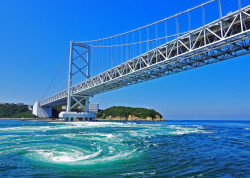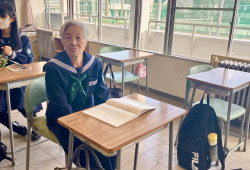
May 29, 2014
World Cup Fever
The world’s biggest sporting event is back—and so are Japan’s hopes
By Metropolis
2002: Troussier Japan shines at home
Four years later, the spotlight was on Japan as half a dozen new stadiums were built across the country. The Samurai Blue fielded a squad that included Sydney Olympians Hidetoshi Nakata, Naoki Matsuda, and Tsuneyasu Miyamoto, as well as “Golden Generation” players such as Shinji Ono and Junichi Inamoto.
After an opening draw against Belgium in a packed Saitama Stadium 2002, Philippe Troussier’s side easily progressed to the Round of 16 with wins against Russia and Tunisia. Though Japan was knocked out of the competition by eventual third-place finishers Turkey, the tournament was considered a triumph and gave a boost to J.League attendance.
2006: Zico Japan flounders in Germany
Japan punched its ticket to the tournament in a somewhat unusual fashion: a 2-0 closed-door win against North Korea in Bangkok. But under the command of Brazilian legend and former Kashima Antlers player Zico, the team suffered from internal discord and never found its bearings in Germany. A 1-0 lead against Australia in the opening game turned into a nightmare as Japan surrendered three goals in the final ten minutes, sowing the seeds of what would become a healthy rivalry between the two countries.
That match was followed by a scoreless draw against Croatia and a 4-1 loss to Brazil, sealing Japan’s exit from the tournament. The embarrassing defeat would become the final match for superstar Hidetoshi Nakata, who announced his retirement less than two weeks later.

2010: Embattled Okada Japan provides dramatic display
After popular coach Ivica Osim was forced to step down from the national team following a stroke, Takeshi Okada was recalled by the JFA to bring Japan to its fourth-straight World Cup. Despite a largely trouble-free qualification, his lofty goal of reaching the semifinals was widely mocked by both press and fans, and a run of losses ahead of the tournament even inspired fans to petition for Okada’s resignation.
Among the squad’s World Cup debutants were midfielder Keisuke Honda, then at CSKA Moscow, and left back Yuto Nagatomo, who after the tournament would join Italy’s Cesena in the Serie A. Yet rumors flourished that former Celtic legend Shunsuke Nakamura’s inclusion in the squad was due to sponsor pressure, and Okada was criticized for his decision to leave Cerezo Osaka starlet Shinji Kagawa off the team.
But despite warm-up losses to England and Ivory Coast, Okada’s decision to start backup goalkeeper Eiji Kawashima—and bench Shunsuke—paid off for Japan in South Africa. Honda’s goal put Japan over Cameroon in the opening game, and despite a 1-0 loss to Netherlands in the second match, Japan reached the Round of 16 in a 3-1 thrashing of Denmark.
Japan went the distance in its Round of 16 match against Paraguay, taking a scoreless draw all the way to penalty kicks where the team eventually lost 5-3. Okada returned to Japan a hero, while several Japanese players made their way to Europe after impressing scouts.

2014: How far can Zac Japan progress?
Though it may be difficult to find anyone truly convinced that Alberto Zaccheroni is capable of guiding Japan to its first World Cup title, it’s undeniable that under his watchful eye the Samurai Blue have become more talented than ever before.
In addition to a qualifying campaign that was considered all but a formality, the Italian led Japan to its fourth Asian Cup title in 2011, as well as its first East Asian Cup in 2013. Japan’s thrilling 4-3 loss to Italy in the Confederations Cup and away wins at France and Belgium drew rave reviews from the international press, but the team has also run cold at times against lower-ranked opponents such as Belarus, Iraq and Canada.
In a crowded World Cup field that includes host Brazil, reigning champion Spain and powerhouses Germany and Argentina among its 32 participants, Japan was rewarded in last December’s final draw with a generously balanced group that includes Colombia, Ivory Coast and Greece. As fans of countries such as England and America lamented their placements in the “Group of Death,” Japanese media rejoiced in the “Group of Opportunity”—albeit one that could see them face titans Italy or Uruguay in the Round of 16.
Japan’s squad of 23 players demonstrates the extent to which Japanese soccer has evolved since the Agony of Doha: the baker’s dozen with prior experience in the J.League’s second division indicate the strength and depth of the country’s soccer culture, while the 12 belonging to European clubs represent Japan’s ability to produce star players.
Speaking of “12,” the “12th Man” should also push Shinji Kagawa and company forward, with supporter group Ultras Nippon prepared to make its presence known wherever Japan is playing. Hordes of journalists and fans traveling to the tournament will be backed by Brazil’s 1.5 million-strong nikkei community, not to mention the millions of neutral fans across the world who have fallen in love with the J.League thanks to internet streaming.
Whether or not Japan reaches its first-ever quarterfinals, its performance at the World Cup will surely inspire more to participate in the sport at all levels—a goal that remains the same for the JFA, even after more than two decades of revolutionary change.







